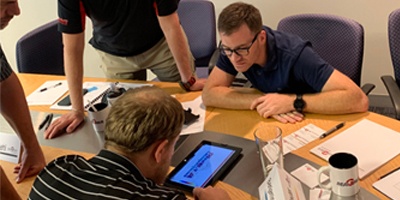MAGMAacademy HPDC Overview & Results Seminar
Communication is critical in all stages of manufacturing. During initial product development, the design engineering team and manufacturing process engineering team decide on a suitable design for manufacturing. Once the part geometry is largely finalized, the difficult task of designing a tool begins and communication becomes especially important. The product engineer must work with suppliers to determine quality standards and any out of cavity features that affect part performance, such as gate, overflow, and parting line locations. The supplier in turn must source a die builder and work to design a tool that can produce high integrity castings. By the time the first shot is made, the communication channels stretch across thousands of miles and include hundreds of individuals.
In the recent MAGMASOFT® Overview and Results for High Pressure Die Casting (HPDC) seminar, participants learned how to utilize simulation to effectively communicate the requirements necessary to design and manufacture high integrity die castings. Individuals from various aspects of the design and manufacturing process including product engineers, tooling engineers, casting purchasers, and casting suppliers attended. Over the course of two days, the group discovered that although they came from different arenas of the die casting process, they all could benefit from communicating using a common language with MAGMASOFT®
Day one covered an overview of user inputs and basic view controls. Seminar attendees learned what information needs to be exchanged between engineering groups and the MAGMASOFT® user in order to define accurate simulation set-ups. Likewise, non-users learned what tools are available in the results perspective to generate powerful and easily explained outputs. Key filling and solidification results were defined and applications examined. Day two provided a summary of MAGMAstress® module and gave an insight of why internal stresses need to be considered in all stages of casting design and production. The seminar concluded with an engineering case study where participants learned what a complete casting analysis using Autonomous Engineering™ looks like. The case study provided an example of how a comprehensive engineering approach to die casting can communicate important information easily and effectively.
This was also the first group to use the new MAGMAinteract! Learn more about MAGMAinteract here: MAGMAinteract
